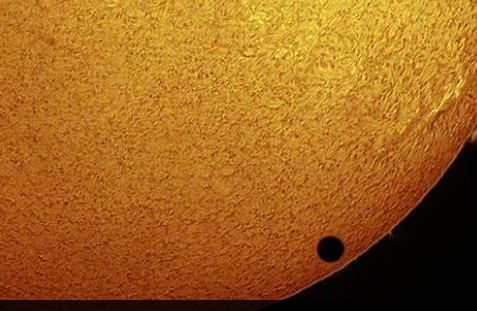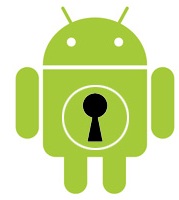Based in Atlanta, GA - Rick Limpert is an award-winning writer, a best-selling author, and a featured sports travel writer.
Named the No. 1 Sports Technology writer in the U.S. on Oct 1, 2014.
Entries in hole (3)
Should You Watch the Transit of Venus Tonight?
 Tuesday, June 5, 2012 at 2:32PM
Tuesday, June 5, 2012 at 2:32PM 
I hear a lot of people are planning to watch the transit of Venus on Tuesday (June 5), but it's extremely important that prospective viewers be warned to take special precautions (as with a solar eclipse) to view the silhouette of Venus against the brilliant disk of the sun.
For the United States and Canada the transit will begin when the dark disk of Venus first touches the outer edge of the sun, an event that astronomers call Contact I. From the Eastern U.S. and Eastern Canada, Contact I should occur around 6:03 p.m. EDT. From the Western U.S. and Western Canada, Contact I should occur around 3:06 p.m. PDT.
It will take about 18 minutes for the black disk of Venus to move completely onto the sun's face; ultimately bringing its black disk just inside the sun's upper left edge. If you imagine the sun's disk as the face of a clock, Contact I will occur between the 11:30 and 12 o'clock position. Venus will then progress along a track that will run diagonally from the upper left to the lower right.
Eye safety is always a prime concern when dealing with the sun. Observing a transit is a lot like studying sunspots because, after all, you are looking at a dark spot on the sun.
So, the safest way to view the transit is to construct a so-called pinhole camera. A pinhole, or small opening, is used to form an image of the sun on a screen that is placed about three feet behind the opening.
Binoculars or a small telescope mounted on a tripod can also be used to project a magnified image of the sun onto a white card. Just be sure not to look through the binoculars or telescope when they are pointed directly at the sun! Venus should appear as a distinct, albeit tiny dot on the projected image.
A variation of the pinhole theme is the "pinhole mirror." To make one, cover a pocket mirror with a piece of paper that has a quarter-inch hole punched in it.
Projecting the sun’s magnified image through binoculars, or better yet a telescope, on to a white card or screen is relatively safe and can be used for group viewing. For serious transit observing, a telescope with a full-aperture solar filter is much better.
You should never look at the sun directly through your telescope, even through your finder scope. It is strongly advisable to cover the finder before the transit, so as to avoid looking through it accidentally.
Security Hole Found in Android Phones
 Wednesday, May 18, 2011 at 6:13AM
Wednesday, May 18, 2011 at 6:13AM 
A recent report says some 99.7% of Android devices in circulation are vulnerable to an attack that could compromise sensitive data transmitted over a wireless network connection. The hole reportedly stems from a flaw in Google's ClientLogin authentication protocol, which verifies communication between Android devices and applications.
To use ClientLogin, an app requests an authentication token (authToken) from the Google service by passing an account name and password over an HTTPS connection. The returned authToken can be used for any subsequent request to the service API and in addition to remaining valid for up to two weeks, it's not bound to any session or device-specific information.
Those attributes wouldn't be an issue if attackers couldn't obtain an authToken, but that isn't the case.
The article notes that many applications can send such data over an unencrypted HTTP connection, making it easy for unsavory types to obtain the authToken with software utilities such as Wireshark.
I'm sure they are working on fixing this at this moment. Androis users, look for an update or updates soon.
 Android Phones,
Android Phones,  Security flaw,
Security flaw,  hole,
hole,  login in
login in  Gadgets,
Gadgets,  Internet,
Internet,  News,
News,  Telephones
Telephones 
